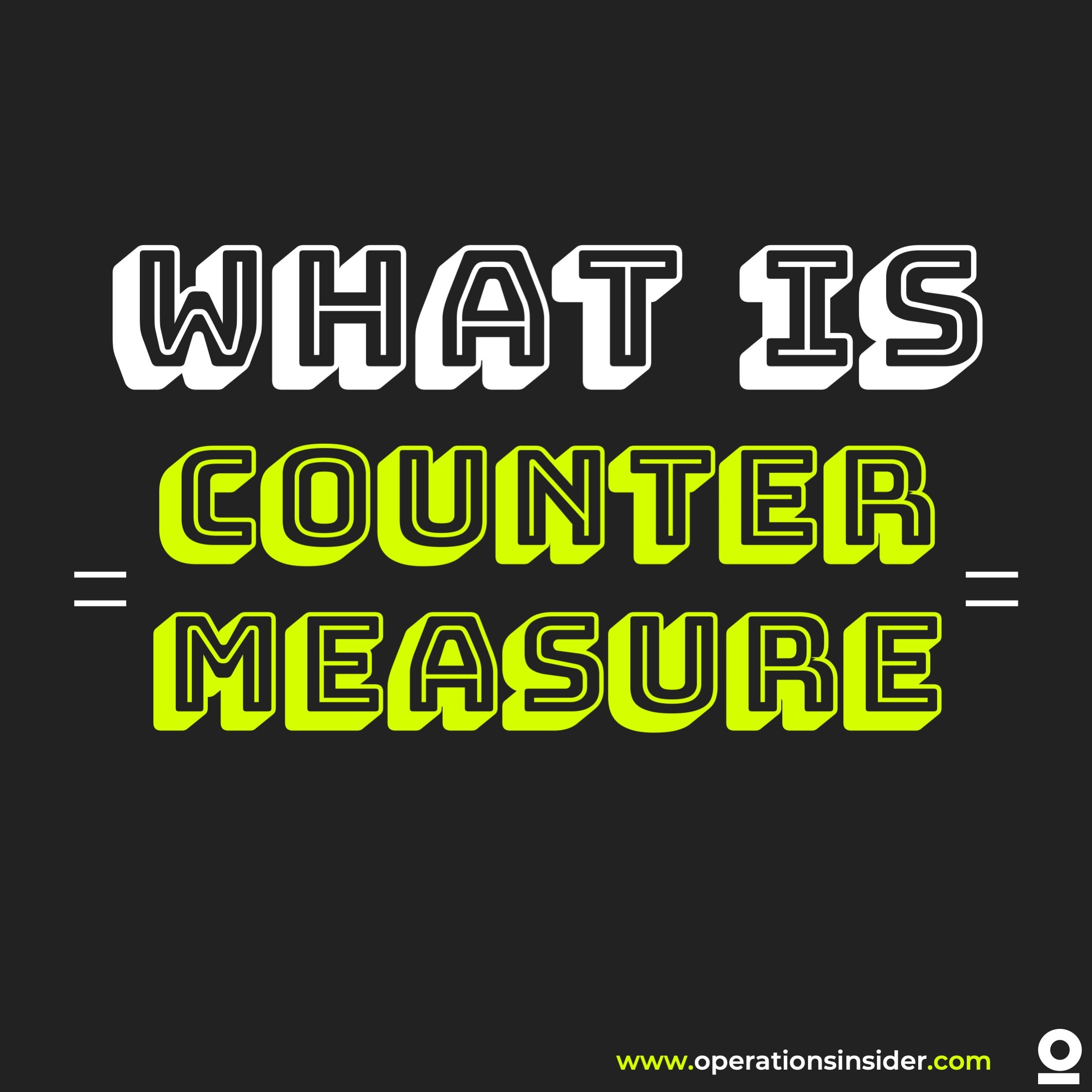
LANGUAGE OF LEAN
Counter Measure
Counter Measurements are a powerful way to track progress and identify areas for improvement, but it is important to understand the difference between short, mid, and long-term actions.
In the manufacturing industry, it is essential to continuously monitor and improve processes to achieve Operational Excellence. One key tool in this effort is the use of Counter Measurements. Counter Measurements are a powerful way to track progress and identify areas for improvement, but it is important to understand the difference between short, mid, and long-term actions.
Short-term actions are immediate solutions to problems that need to be addressed quickly. They are typically reactive, focused on addressing a specific issue and achieving a quick win. Examples of short-term actions include implementing a temporary fix to a machine that is causing production delays, or adjusting a process to improve efficiency.
Mid-term actions are solutions that address underlying issues and provide a longer-lasting impact. These actions may take a bit more time to implement, but they are more comprehensive and often involve a deeper analysis of the problem and its root causes. Examples of mid-term actions include optimizing a production line, improving maintenance procedures, or reducing waste in a process.
Long-term actions are focused on transforming the organization and achieving sustainable change. These actions are strategic, and often require significant investment and planning. They are designed to address the biggest problems facing the organization and to create lasting improvements in processes and systems. Examples of long-term actions include implementing a new production line, modernizing technology, or transforming the supply chain.
So, what makes the difference between short, mid, and long-term actions, and when should each be used? The key difference is the time frame and the level of investment required. Short-term actions are quick, low-investment solutions that can be implemented quickly. Mid-term actions are more comprehensive, requiring a deeper analysis and investment, but they provide a longer-lasting impact. Long-term actions are the most transformative, requiring significant investment and planning, but they are also the most impactful.
To make the most of Counter Measurements, it is important to understand the difference between these types of actions and to choose the right type for each situation. By selecting the right type of action, organizations can achieve quick wins, drive sustainable change, and achieve Operational Excellence.
In a nutshell, Counter Measurements are a critical tool for tracking progress and identifying areas for improvement in the manufacturing industry. By understanding the difference between short, mid, and long-term actions, and by choosing the right type of action for each situation, organizations can achieve continuous improvement and drive sustainable change. With the right approach and the right tools, organizations can achieve Operational Excellence and transform their operations.
Flow Cell
One of the key principles of lean management is the flow cell principle, which is all about optimizing the flow of materials, information, and processes within a manufacturing facility.
Lean management is a production philosophy that seeks to streamline operations and eliminate waste, thereby improving efficiency and reducing costs. One of the key principles of lean management is the flow cell principle, which is all about optimizing the flow of materials, information, and processes within a manufacturing facility.
The flow cell principle is based on the idea that work should be performed in a continuous and uninterrupted flow, without any idle time or unnecessary delays. This principle is critical to achieving lean goals such as reducing lead times, improving quality, and increasing productivity. In order to implement the flow cell principle, a manufacturing facility must first identify and eliminate bottlenecks and constraints in its operations.
The flow cell principle can be applied to a variety of processes within a manufacturing facility, from raw material intake to finished product shipment. For example, in a manufacturing cell, raw materials are moved from one station to another in a continuous flow, without any stops or interruptions. Each station is designed to perform a specific task, and the flow of materials is carefully controlled to ensure that the entire process is as efficient as possible.
The flow cell principle is not just about physical movement of materials, however. It also involves the flow of information, as data must be shared in real-time across different departments and processes in order to optimize flow. A well-designed flow cell system should also include checks and balances to ensure that quality standards are met and that products are being produced to the required specifications.
Another key aspect of the flow cell principle is continuous improvement. Lean management emphasizes the importance of continuous improvement, and the flow cell principle is no exception. By constantly monitoring and analyzing the flow of materials, information, and processes, manufacturing facilities can identify areas for improvement and make the necessary changes to optimize their operations.
In conclusion, the flow cell principle is a critical component of lean management and is essential for achieving lean goals such as reducing lead times, improving quality, and increasing productivity. To fully realize the benefits of the flow cell principle, manufacturing facilities must implement it as part of a comprehensive lean management program, which includes continuous improvement, real-time data sharing, and strict quality control measures.
Stay Connected
Ad
We want information fast and in a nutshell. We from OI recommend Blinkist* - because it’s simply the best.
* = Affiliate Link

































